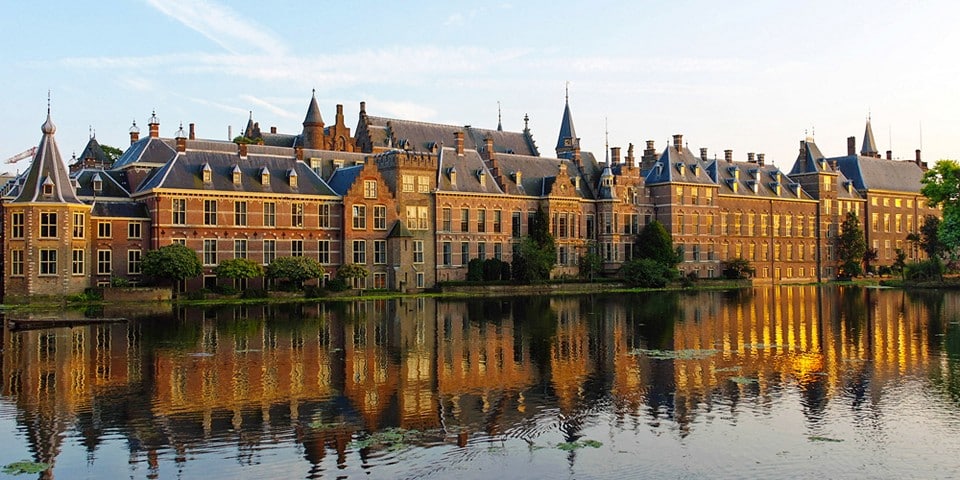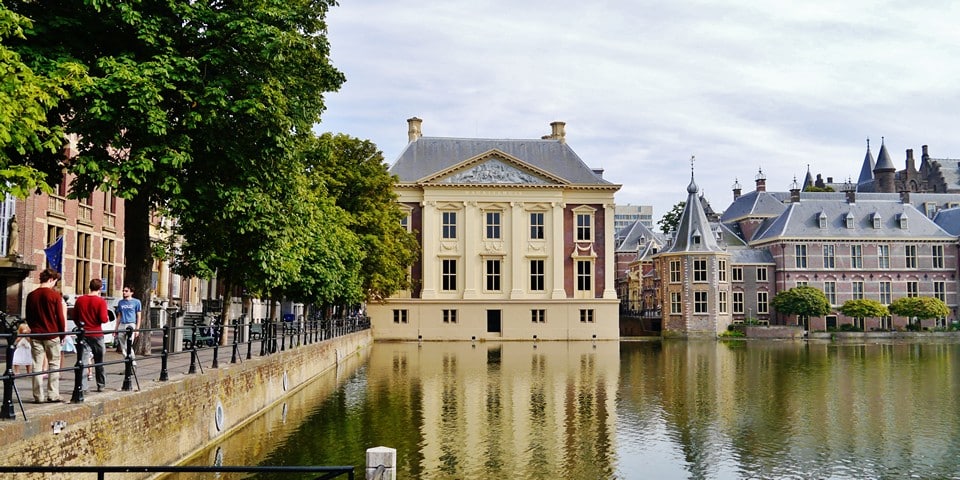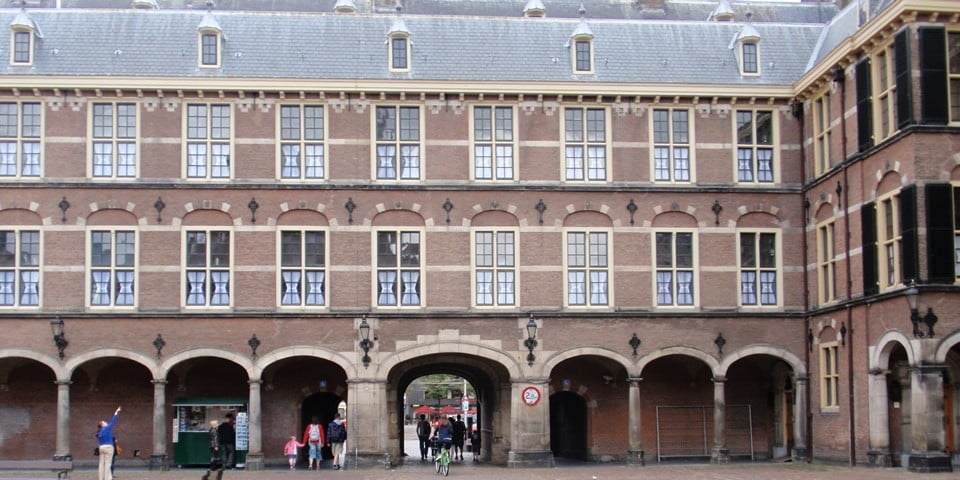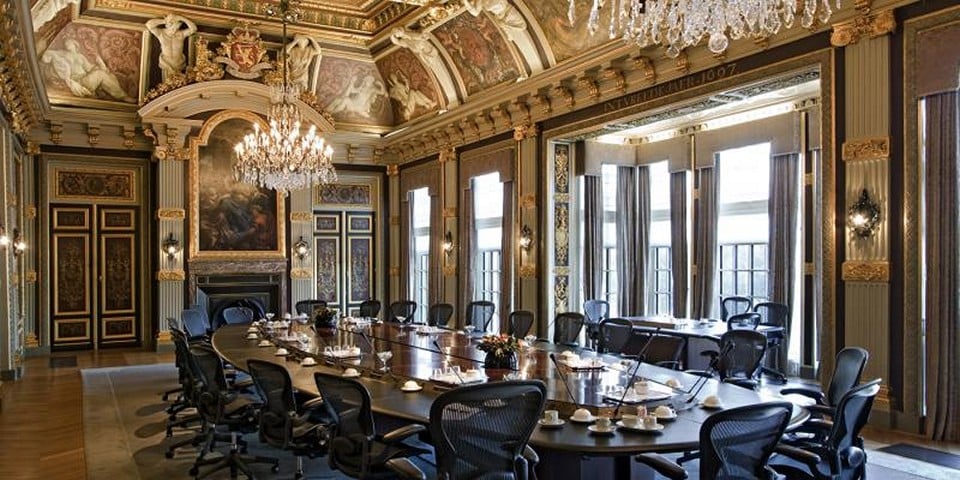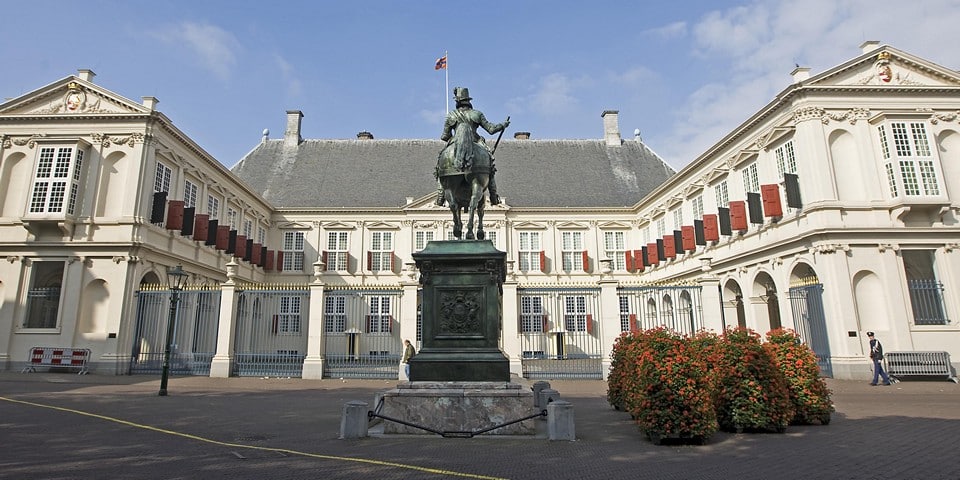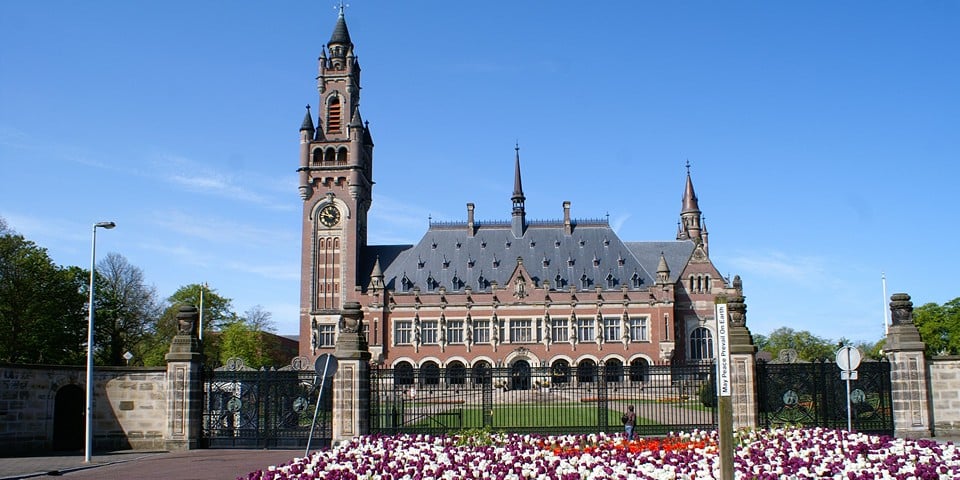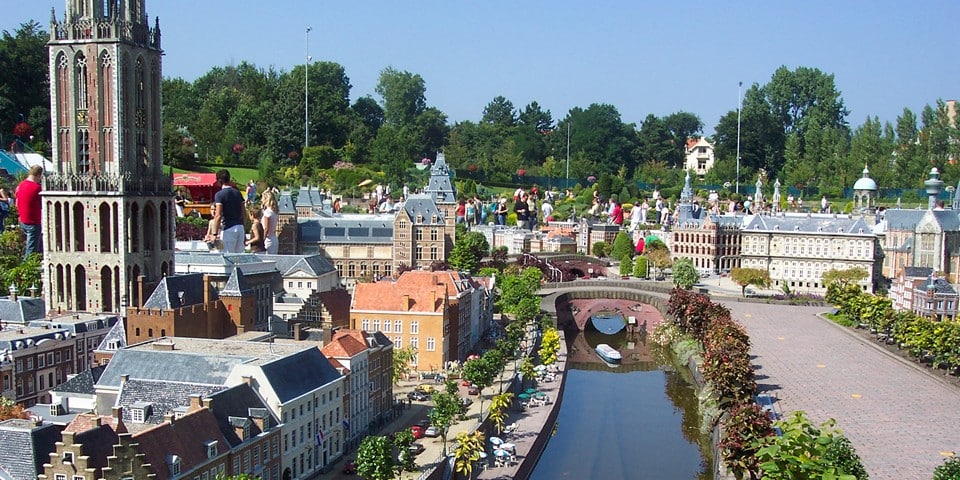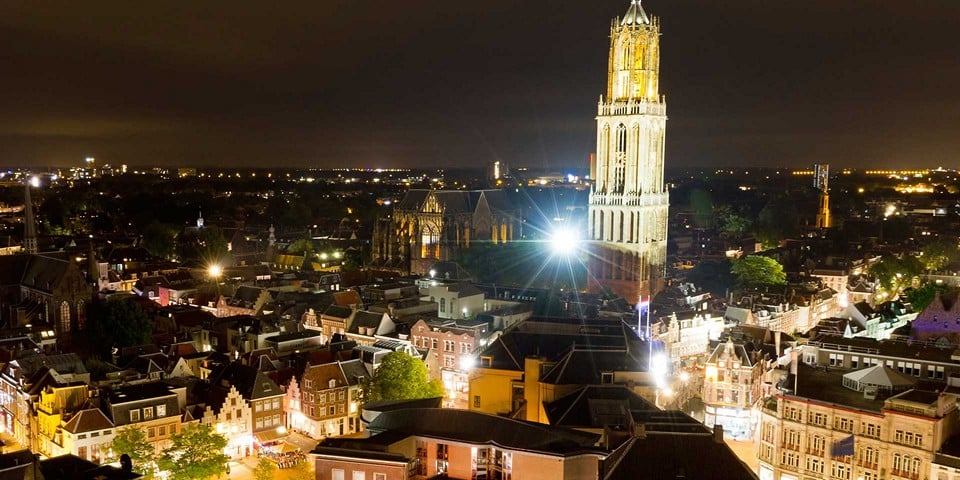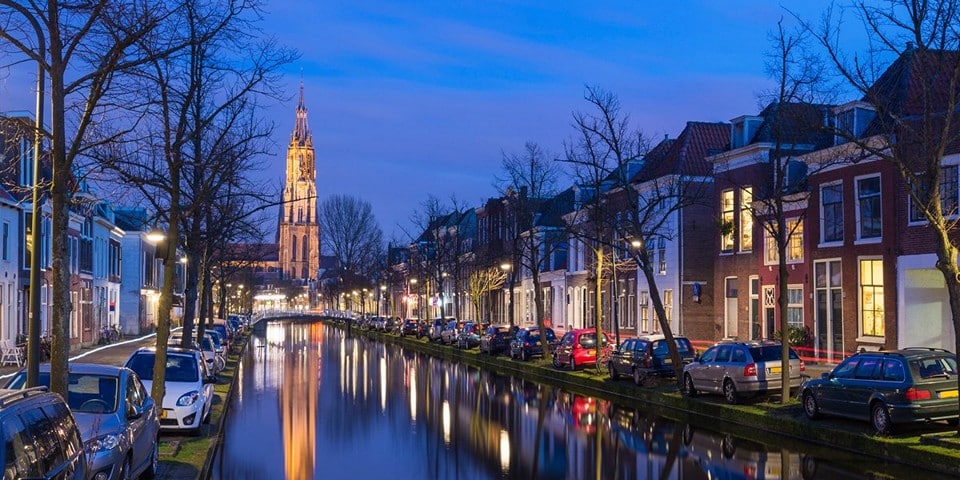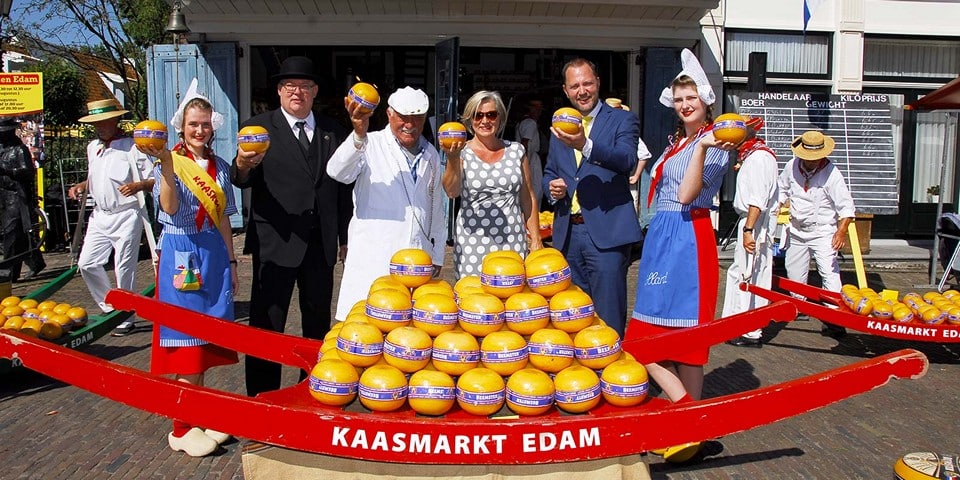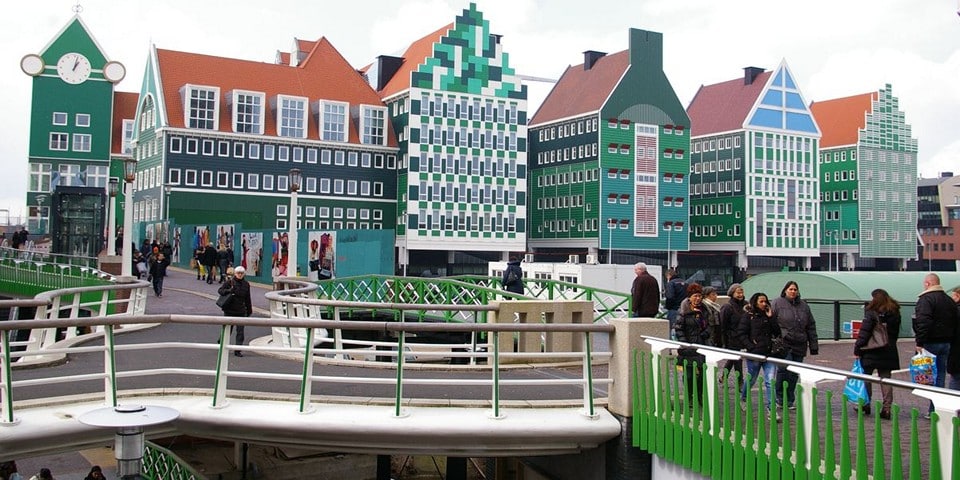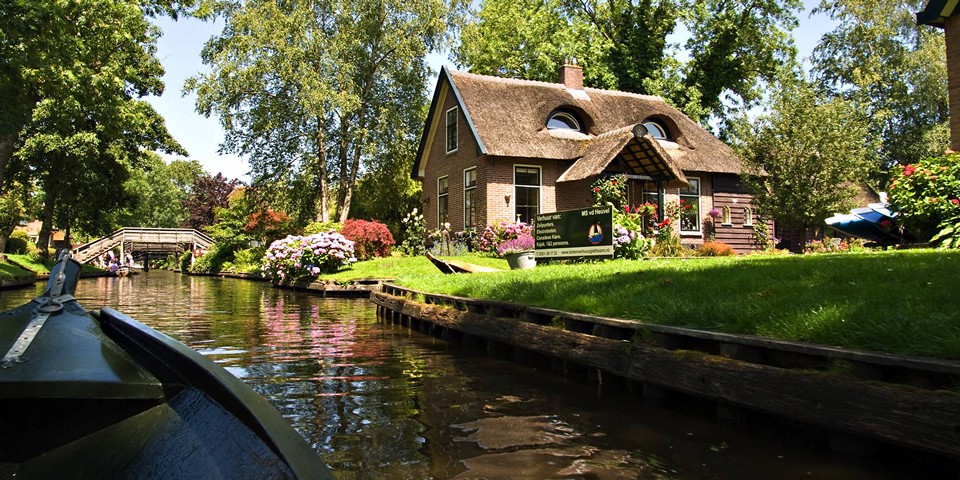The Hague (Den Haag) is the place where the fate of the world is decided. Major international legal institutions are located here, including the UN Court, Europol, Eurojust, the Organization for the Prohibition of Chemical Weapons. The Hague is home to the Dutch parliament and government, as well as two royal residences. The first, Paleis huis ten Bosch, was handed over to the monarchs for personal use in 1981, the second, Paleis Noordeinde, is the king's working palace, where important business meetings of the ruler of the country take place. And this is not the whole list of attractions in The Hague.
Geography
The Hague is the main city of the province of South Holland (Zuid-Holland), located 62 km from Amsterdam to the southwest. Although the Hague is nominally not the capital of the Netherlands, in reality it is it that fulfills this function: the government of the country is located here, the royal family lives.
The area of The Hague is 98.2 km2, and more than 500 thousand people live herel., thanks to which the city is the third largest in the Netherlands after Amsterdam and Rotterdam. Representatives of various nationalities live here, and half of the inhabitants are not native Dutch, and do not even belong to the Caucasian race. There are many Turks, Moroccans, Surinamese and natives here.
The Hague is located on the coast of the North Sea (Noordzee), and is the only major seaside city in the Netherlands with a coastline of 11 km. Therefore, there are two resort areas in the city - Scheveningen and Kijkduin. In addition, there is a long sandy beach with dunes and a huge number of parks.
Although there are many canals in The Hague, they are landlocked, with the exception of reservoirs that connect to the Verversingskanaal. This canal flows into the harbor of Tweede Haven, from which three major ports in a row - Eerste Haven, Voorhaven and Buitenhaven - are directly connected by the North Sea. The rest of the canals, far outside the city limits, connect to the Old Rhine (Oude Rijn).
Although the canals of The Hague are used for navigation, they are not particularly popular, since many bodies of water here are narrow, swampy, and smell bad. Therefore, rich people prefer to live outside the city in the summer. However, in recent years, serious measures have been taken to restore water bodies, so the city has many well-maintained canals along which you can take a pleasant cruise around The Hague.
History
The Hague was founded in 1230 by Floris IV, Count of Holland, when he built a hunting lodge near Lake Hofvijver, on the site of which is now the Binnenhof, where the Dutch government sits. After some time, a settlement appeared around the hunting lodge, and the area began to be called Des Graven Hage, which means "Count's Forest".
Eighteen years later, Floris's son, Wilhelm II, began to build a new residence near the hunting lodge, Ridderzaal Castle, completed by his son Floris V. The palace has survived to this day, and is the place where the Dutch monarch addresses his subjects every year.
Thus, from the very beginning, The Hague has been the seat of Dutch rulers for centuries. In the XIV century. several thousand people lived here, and since 1581 the government of the Republic of the United Provinces (Republiek der Zeven Verenigde Nederlanden) was located. Despite this, the settlement received the status of a city only in 1806. The king of Holland, Napoleon's brother, Louis Bonaparte, granted city rights.
By this time, the number of local residents reached 40 thousand people. At the same time, there was a strong contrast between the northern and southern parts of The Hague: the elite settled to the north of the castle, while the working-class districts stretched to the south. At the beginning of the XX century. 200 thousand people lived in the city.
In 1899, the first peace conference was held in The Hague, during which the International Court of Arbitration was established. For the construction of the palace of justice, American millionaire Edrew Carnegie allocated $ 1.5 million, a fantastic amount at that time. After that, the city grew, expanded, and only for a short time its development was stopped by the Second World War.
What to see in The Hague in 1 day?
Attractions
The Hague is renowned for its incredibly stunning mix of architectural styles... The buildings of the Renaissance, Baroque, Classicism epochs here perfectly coexist with modern skyscrapers. Therefore, before going to The Hague, you need to think over the travel route in advance and set aside a few days. The Royal Residence, the Peace Palace, cathedrals and town halls, the Inquisition Museum and an exhibition of paintings by the best Dutch painters will not leave anyone indifferent!
Binnenhof
The history of the Binnenhof, which means "patio", is closely related to the history of The Hague. It was on this site that Floris IV built a hunting residence eight hundred years ago. Now the castle is a few buildings, united into a single complex, where the fate of Dutch politics has been decided since the founding of the castle.
The main buildings of the Binnenhof are:
- Ridderzaal Castle (translated as "Knight's Hall") - located in the center of Binnenhof. In this building, every third Tuesday in September, the monarch delivers a solemn speech in honor of the opening of sessions of Parliament. Also, the palace is used for inter-parliamentary conferences, official royal receptions. Tourists can take an excursion to Ridderzaal Castle every second weekend in September;
- The octagonal Torentje building appeared in the 14th century. in the northern part of the Binnenhof, to the right of the Grenadier Gate. Initially, the building served as a summer pavilion for the Dutch counts, which was washed on both sides by the waters of Lake Hofvijver. Now it houses the offices of the Prime Minister, as well as the Minister for General Affairs;
- To the north of Torentje is the Mauritshuis house. Now it houses one of the most visited museums in the world, where canvases by Dutch artists of the "Golden Age" are exhibited. Open from 10 to 18 (Monday from 13), entrance 14 €, with a visit to the gallery - 17.5 €. The entrance is not from the courtyard of the Parliament, but from the street Plein, 29;
- The house where the Upper House of Parliament (Eerste Kamer der Staten-Generaal) sits was built in 1650 on the shore of the lake in the eastern part of the palace complex. There are public galleries in this house, which can be accessed from the Moritz tower, as well as the gallery of Amalia van Solms (De Amalia van Solmsgalerij is een galerij), which is located on the second floor of the Moritz house;
- Chapel Hofkapel - Built by William II as a court chapel. At the end of the XIX century. the chapel was sold to the government. The offices of the Senate are now located here. The chapel is located to the north of the Eerste Kamer der Staten-Generaal;
- The Moritz Tower (Mauritstoren) is located slightly south of the Upper House of Parliament. It was built at the beginning of the 17th century. for Prince Moritz of Orange (Maurits). For a long time, the offices of the ministers were located here, negotiations were held on the formation of the Government. Now it houses the offices of various government structures;
- Trêveszaal appeared at the beginning of the 17th century. Located north of Ridderzaal Castle. Use the building for official receptions of the prime minister and cabinet meetings;
- Het Keurhuis - located in the northern part of the complex. The building was built in 1640 for the Guild of Gold and Silver Products.
Binnhof is notable for the fact that on one side, right next to the walls of the palace complex, the waters of Lake Hofvijver are splashing. On the south side of the Ridderzaal castle is the Binnenhoffontein fountain, in the upper part of which there is a gilded statue of Wilhelm II. The fountain was presented to the government by the townspeople, and the government at first did not want to accept the gift because of the high cost of water. Then it was decided that the fountain would work only on high tide days.
- Address: entrance from the Place Plein through the Grenadierspoort;
- Mauritshuis website: www.mauritshuis.nl;
- Entrance fee to the courtyard of the parliament: free.
Heis-ten-Bosch palace
Heis-ten-Bosch Palace is the place where representatives of the royal family live. The castle was built in the middle of the 17th century. outside the city (now in the northern part of The Hague) as a summer residence for Amalia van Solms, widow of Frederick Henry of Orange. After her death, the house constantly passed from hand to hand, until at the time of Bonaparte it was nationalized, and the confiscated things were sold.
After some time, by order of Louis Bonaparte, significant changes were made to the interior of the house, after which the palace became an example of the imperial style. After 1815, the castle became the seat of the royal family. The Nazis almost destroyed it, but the destruction was prevented.
Heis-ten-Bosch Palace is usually closed to tourists. Sometimes the Orange Hall (Oranjezaal) is opened for visiting, where you can see the canvases of famous painters. It is very difficult to get tickets here, they are dismantled long before this event. On other days, the attraction can only be seen while walking through the Hague Forest (Haagse Bos), which surrounds the castle grounds and is accessible to the public. It should be borne in mind that the castle is poorly visible behind the fence.
- Address: Paleis Huis ten Bosch 's-Gravenhaagse Bos, 10;
- Web site: denhaag.com.
Paleis noordeinde
Palais Noordeinde (Paleis Noordeinde) is located five hundred meters from the Binnenhof to the northwest. The most important events related to the history of the royal family (weddings, farewell to the dead) take place here. Besides, Nordeinde has been the office of the king since 1984... Therefore, the entrance here for tourists is closed, although there is an opportunity to visit the palace garden, where the Royal Mews and the Royal Archives are located. But sometimes, on special occasions, the doors of the palace are opened for visitors.
It is believed that the palace was built at the beginning of the 16th century, although there is evidence that the building existed already at the end of the 14th century. In 1556, the building was purchased for Louise de Coligny, Princess of Orange, widow of William of Orange, and her son Frederick Henry. Since then, representatives of the royal family have used the palace for various purposes.
In 1984, the castle was restored, after which it became the office of Queen Beatrix (Beatrix Wilhelmina Armgard), then her son Willem-Alexander.
- Address: Noordeinde, 68;
- The entrance is closed for visitors.
Peace palace
The Peace Palace (Vredespaleis) was built in The Hague in 1913 with the money of the multimillionaire Andrew Carnegie. It houses the International Court of Justice, the Academy of International Law, and the Permanent Court of Arbitration.
The castle, in a mixed Gothic, Romanesque and Byzantine style, was built from light sandstone, gray granite and red brick. In the corner of the building, the builders erected an 80-meter clock tower, and in front of the facade they laid out lawns and installed several sculptures reminiscent of the purpose of the palace. Inside the building, there are works of art donated to the Peace Palace by different states. The sculptures, tapestries, stained-glass windows, mosaics collected here symbolize the diversity of world cultures.
There is a visitor center at the Peace Palace, which is open almost daily, except Monday, admission is free. The House of Justice is usually closed to the general public, but tourists are allowed here several times a year, mainly on weekends. For details of this event, visit the website. It is also possible to order a guided tour of the garden, but this can only be done through the website, online. Otherwise, the palace can only be viewed from the outside. Tours are held at a strictly defined time.
- Address: Carnegieplein, 2;
- Web site: vredespaleis.nl;
- The cost of tickets for the castle from 10 years old - 9.5 €;
- Garden tickets from 10 years old: 7.5 €.
Museum of miniatures
One of the most interesting museums in The Hague is Madurodam, a city of miniatures. It is located at the edge of the Van Stolkpark en Scheveningse park and covers an area of 17.630 m².
Madurodam is a replica of a typical Dutch city, scaled down to 1 to 25. The museum was opened in 1952 - and since then its collection has been constantly expanding. The most famous buildings in the Netherlands can be seen here. Among them - the royal palace, Schiphol airport, Anne Frank house, railway, Binnenhof, Peace Palace. There are currently over 700 models here, some of which move when you flip a coin. All exhibits are made in the museum workshop.
The miniature park got its name in honor of the officer George Maduro, who died in a German concentration camp. In memory of him, the parents decided to create an amazing museum, part of the profits from which they sent to sanatoriums, where children with tuberculosis were treated. Now this disease is almost non-existent in the Netherlands, so the money is used for other charitable purposes.
- Address: George Maduroplein, 1;
- Web site: madurodam.nl;
- Working hours: April-September - from 9.00 to 20.00; September-October: from 9.00 to 19.00, winter period - from 11.00 to 17.00, from December 24 to January 7: from 11.00 to 20.00;
- Ticket price: one ticket - 16.5 €, 4 tickets - 49.5 €. When buying online, the ticket will cost less - 14.5 €. Ticket offices stop working an hour before the museum closes.
How to get from Amsterdam
The Hague is located at a distance of 60 km from Amsterdam, so you can get here in forty to sixty minutes by train, car or bus.
By train
Trains leave from Station Amsterdam-Zuid or Amsterdam Centraal every five to ten minutes. The journey takes 40 minutes without a change. Some trains run via Schiphol Airport, in which case the journey will take 10 minutes longer. The last train leaves at midnight, the first leaves at half past five in the morning.
A second class ticket costs 11.5 €, but on some flights you have to pay 1-2%. A trip in first class will cost € 19.6. More detailed information about ticket prices and timetables can be found on the website www.ns.nl.
By bus
You can get to The Hague from Amsterdam by direct bus: there are several flights per day - this is a more economical option, since a bus trip will cost from 5 to 9 €, depending on the day of the week and time of day.
Buses leave from Amsterdam Sloterdijk Station and takes 45 minutes. More details about the timetable and ticket prices can be found here: www.flixbus.
By car
It takes just over an hour to get to The Hague by car. The most convenient route is along the A4 highway. First you need to leave Amsterdam on the A10 (Amsterdam-West) highway via Damrak, Haarlemmer Houttuinen and Haarlemmerweg / s103.
After some time, the A10 highway turns into A4. After that, take the A4 / E19 highway towards Schenkkade (Den Haag), and go to the A12 highway. From there take the 3-Bezuidenhout exit. Then move along Schenkviaduct, Waldorpstraat, reaching S100 you need to go to your destination (Centrum).
Why come here
The sights of The Hague are a must-see for everyone. This is the city where justice is done and kings live and work. Numerous churches, palaces, monuments, museums, miniature park, Peace Palace in The Hague will not leave anyone indifferent.

